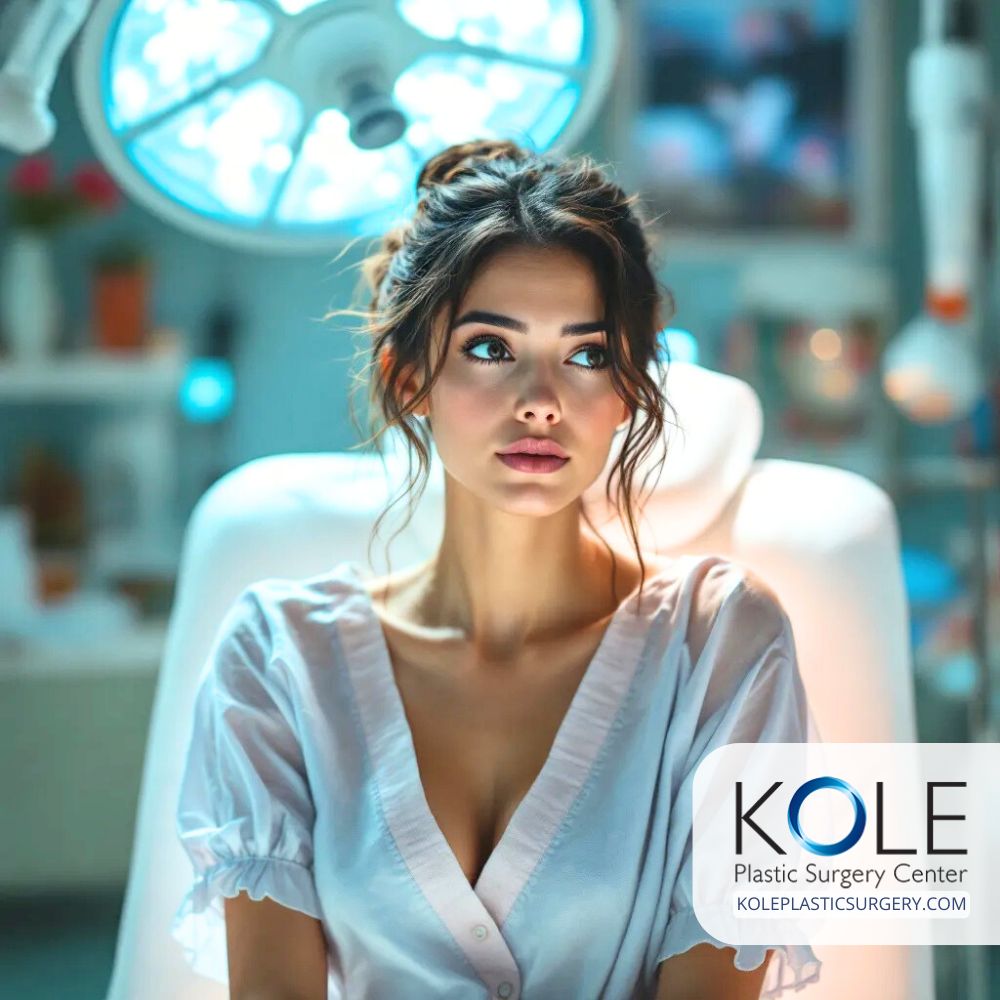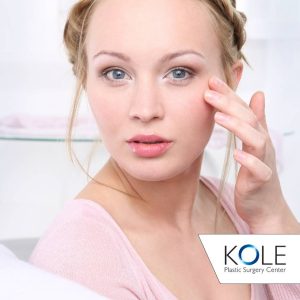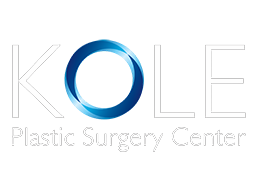After nearly three decades in plastic surgery, I’ve heard virtually every misconception about cosmetic procedures. These myths often prevent people from exploring options that could genuinely improve their quality of life. At The Kole Plastic Surgery Center, we believe in complete transparency and education. An informed patient is an empowered patient, capable of making decisions that align with their goals and values.
Today, I want to address the ten most persistent myths I encounter in my practice. Some of these misconceptions are rooted in outdated information from decades past, while others stem from sensationalized media portrayals or simple misunderstandings. By separating fact from fiction, I hope to provide clarity for anyone considering cosmetic enhancement, whether surgical or non-surgical.
Myth #1: “Plastic Surgery Always Looks Fake and Overdone”
This might be the most damaging myth in our field. The truth is, you only notice bad plastic surgery. Excellent plastic surgery is invisible – it simply makes someone look refreshed, rested, or like a better version of themselves. In my practice, I perform hundreds of procedures annually, and the vast majority of my patients report that people can’t pinpoint what’s different; they just look better.
The “overdone” look that concerns many patients typically results from either poor surgical technique or patients insisting on extreme changes against their surgeon’s advice. Modern techniques emphasize natural results. For instance, today’s breast augmentation focuses on proportion and balance rather than maximum size. Contemporary facelifts restore youthful contours without the windswept appearance of decades past.
According to patient satisfaction surveys from the American Society of Plastic Surgeons, over 95% of patients report natural-looking results when procedures are performed by board-certified plastic surgeons. The key is choosing an experienced surgeon who shares your aesthetic vision and isn’t afraid to say no to requests that would create unnatural results.
Myth #2: “Plastic Surgery Is Extremely Painful”
This outdated belief keeps many people from procedures that could benefit them. Modern pain management has revolutionized plastic surgery recovery. I use multimodal approaches combining long-acting local anesthetics, anti-inflammatory medications, and minimal narcotic use. Many patients are surprised to report their discomfort as mild to moderate rather than severe.
For example, breast augmentation patients often expect significant pain but frequently manage with over-the-counter pain relievers after the first few days. Facial procedures typically involve even less discomfort. One recent facelift patient told me she experienced less pain than from her dental work. Advanced techniques like nerve blocks and extended-release numbing medications have transformed the recovery experience.
Non-surgical procedures have virtually eliminated pain concerns. Modern injectors use topical anesthetics, cooling devices, and ultra-fine needles that make treatments like Botox and fillers surprisingly comfortable. Even more intensive treatments like laser resurfacing now use advanced cooling systems and precise energy delivery to minimize discomfort.
Myth #3: “Only Vain or Insecure People Get Plastic Surgery”
This harmful stereotype couldn’t be further from the truth. My patients are confident, successful individuals who view cosmetic procedures as one aspect of overall self-care. They’re executives, teachers, parents, and professionals who simply want their external appearance to match their internal vitality.
Research published in the Journal of Plastic and Reconstructive Surgery shows that plastic surgery patients typically have normal to high self-esteem levels before surgery. They’re not trying to fix deep psychological issues; they’re addressing specific concerns that bother them. A prominent nose, sagging eyelids, or post-pregnancy body changes are physical realities, not character flaws.
I’ve performed surgery on psychologists, physicians, and CEOs who understand that investing in appearance is no different from investing in education, fitness, or professional development. One patient, a nonprofit director, told me her breast reconstruction after cancer wasn’t about vanity – it was about feeling whole again.
Myth #4: “Men Don’t Get Plastic Surgery”
This myth is rapidly becoming extinct. Male cosmetic procedures have increased by nearly 30% over the past decade, and men now represent almost 20% of my practice. Modern men understand that appearance impacts professional and personal success, and they’re taking action.
Male patients seek the same confidence boost as women but often with different goals. They want stronger jawlines, not delicate features. They seek to eliminate eye bags that make them look tired in the boardroom, not create dramatic eyes. Hair restoration, gynecomastia correction, and subtle facial rejuvenation rank among the most requested male procedures.
The discretion concern that once kept men away has largely dissolved. Today’s minimally invasive techniques and faster recovery times allow men to enhance their appearance without extended time away from work or obvious signs of surgery.
Myth #5: “Botox and Fillers Make You Look Frozen”
The “frozen face” phenomenon results from poor injection technique or excessive product use, not from the treatments themselves. When properly administered, Botox relaxes specific muscles while preserving natural expression. You can still smile, frown, and show surprise – you just won’t have deep furrows when you do.
Modern injection techniques focus on facial harmony and natural movement. I use precise amounts in strategic locations to soften lines while maintaining expression. The “liquid facelift” approach with dermal fillers restores volume loss naturally, without the overfilled appearance that marked early filler use.
Patient satisfaction data shows that over 97% of Botox patients and 95% of filler patients report natural-looking results when treated by experienced injectors. The key is starting conservatively and building gradually to achieve your desired outcome.
Myth #6: “Recovery Takes Months and You Can’t Hide It”
Recovery times have decreased dramatically with modern surgical techniques. While every procedure differs, many patients return to work within 1-2 weeks. Advanced techniques like endoscopic surgery, smaller incisions, and improved post-operative protocols have revolutionized recovery.
For instance, modern facelift techniques allow most patients to feel presentable at 2 weeks, compared to the month or more required decades ago. Breast augmentation patients often return to desk jobs within a week. Even more extensive procedures like tummy tucks have shortened recovery periods thanks to enhanced recovery protocols and better pain management.
Non-surgical options provide immediate return to activities. Lunch-hour procedures like Botox, fillers, and some laser treatments allow patients to enhance their appearance without any downtime. Strategic scheduling and makeup can camouflage any temporary bruising or swelling.
Myth #7: “Plastic Surgery Is Only for the Wealthy”
While cosmetic procedures represent an investment, they’re more accessible than many assume. According to the American Society of Plastic Surgeons, the average cost of common procedures has remained relatively stable despite inflation, and financing options have expanded dramatically.
Most practices, including ours, offer financing plans that make procedures affordable through monthly payments. Many patients are surprised to learn that the monthly cost of surgical enhancement often equals what they spend on other discretionary items like dining out or entertainment. Non-surgical treatments can be approached gradually, spreading costs over time while achieving cumulative improvements.
Additionally, some procedures may have insurance coverage. Functional rhinoplasty for breathing problems, breast reduction for pain relief, and eyelid surgery for vision impairment often qualify for coverage. We work with patients to maximize insurance benefits when applicable.
Myth #8: “Results Don’t Last So It’s Not Worth It”
While no cosmetic procedure stops aging, results typically last much longer than people expect. A well-performed facelift provides improvement for 10-15 years. Breast augmentation results are essentially longterm unless you choose to change implants. Rhinoplasty results last a lifetime.
Even temporary treatments provide excellent value. Botox effects last 3-4 months, but regular treatment can actually train muscles to relax, potentially extending duration between treatments. Dermal fillers last 6-24 months depending on the product and area treated. Many patients find that maintaining results requires less product over time as collagen stimulation provides natural improvement.
The longevity question should be viewed in context. We don’t question the value of haircuts, dental work, or fitness routines despite their temporary nature. Cosmetic procedures, whether permanent or temporary, provide ongoing confidence and satisfaction that justifies the investment.
Myth #9: “You Should Wait Until You Really Need It”
This outdated thinking often leads to more extensive procedures later. Preventive and early intervention approaches typically yield better, more natural results. Addressing concerns when they first bother you – rather than waiting until they’re severe – often means less invasive procedures with easier recovery.
For instance, starting Botox in your 30s can prevent deep wrinkles from forming, potentially eliminating the need for more invasive procedures later. Addressing early jowling with a mini-lift prevents the need for extensive surgery down the road. Small-volume fat grafting maintains facial volume better than trying to restore it after significant loss.
The psychological benefit of early intervention shouldn’t be ignored. Why spend years bothered by something fixable? Patients who address concerns proactively report higher satisfaction and often require less aggressive treatments over time.
Myth #10: “All Plastic Surgeons Are the Same”
This dangerous myth leads to poor outcomes and reinforces other misconceptions. Board certification, experience, and aesthetic alignment matter tremendously. A board-certified plastic surgeon has completed years of specialized training beyond medical school, passed rigorous examinations, and maintains continuing education.
At The Kole Plastic Surgery Center, transparency guides everything we do. During consultation, I show before-and-after photos of my actual patients, discuss realistic outcomes, and never pressure anyone into procedures. If I don’t think a procedure will achieve your goals, I’ll tell you honestly. This educational approach ensures patients make informed decisions aligned with their values and expectations.
Choose a surgeon who listens to your goals, provides honest feedback, and has demonstrable experience with your desired procedure. The relationship should feel collaborative, not sales-focused. Your surgeon should be as invested in natural, beautiful results as you are.
Summary: Facts Lead to Better Decisions
Understanding the realities of modern plastic surgery empowers better decision-making. Today’s procedures offer natural results, manageable recovery, and lasting satisfaction when performed by qualified surgeons. Key facts to remember include:
- Natural results are the norm with experienced surgeons
- Pain management has made recovery surprisingly comfortable
- Patients span all demographics and motivations
- Both men and women benefit from cosmetic enhancement
- Non-surgical options provide subtle, natural improvements
- Recovery times continue to decrease with advancing techniques
- Financing makes procedures accessible to more people
- Results provide lasting value and satisfaction
- Early intervention often yields better outcomes
- Choosing the right surgeon makes all the difference
At The Kole Plastic Surgery Center, we’re committed to education, transparency, and natural results. If you’re considering any cosmetic enhancement, I invite you to schedule a consultation where we can discuss your goals honestly and develop a plan that’s right for you. As a double board-certified plastic and reconstructive surgeon, I’ll provide straightforward answers to all your questions and help you separate fact from fiction.
Call 215-315-7655 to begin your journey with a practice that prioritizes education and natural, beautiful results. Your informed decision is our primary goal.







